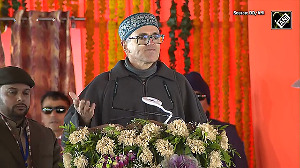Ask your HR department for details about the fund, trustees and returns
 The Pension Fund Regulatory and Development Authority (PFRDA)’s recent proposal to bring unregulated pension funds under its ambit will largely impact superannuation ones that are offered by employers and managed by their private funds.
The Pension Fund Regulatory and Development Authority (PFRDA)’s recent proposal to bring unregulated pension funds under its ambit will largely impact superannuation ones that are offered by employers and managed by their private funds.
These funds follow the Income Tax Act with regard to formation of the trust and investments. However, many feel that despite being governed by the I-T Act, there should be more transparency.
Superannuation funds can be of two kinds. They can be either self-managed trusts or those managed by life insurance companies. For the latter category, insurance company gives a consolidated statement to the employer, but might not provide it to individual employees. In case of self-managed trusts, trustees are supposed to give an annual statement to employees.
Earlier, manufacturing companies used to offer superannuation benefits to their employees. Some multi-national companies, too, used to offer superannuation benefits. Even today, many of the leading companies offer this benefit, either through the insurance company or their own private trusts.
But, the superannuation scheme lost its popularity when the fringe benefit tax was introduced. Today, there are very few superannuation trusts, says Anil Lobo, India business leader (retirement) at Mercer.
“Ideally, superannuation is part of the cost to company and the employer should disclose how much money goes to the fund, returns generated etc. And, since employees can also contribute an additional amount to the fund, they must ask for details of the investments.”
Superannuation benefits are of two kinds – defined contribution or super-defined benefit. In case of defined contribution, up to 15 per cent of the employee’s basic salary would go towards superannuation benefits. The tax benefit was capped at Rs 100,000. In case of defined benefit, the superannuation amount was calculated based on the last drawn salary of the employee.
It is not a big concern if the superannuation fund is not regulated by one authority, since these funds are governed by I-T rules. But logically, they must be regulated by PFRDA since it is the pension regulator, Lobo adds.
Today, companies are more focused on benefits that address the current needs rather than retirement, such as healthcare, leave allowance etc. This has taken away the focus from retirement benefits like superannuation, says Sudip Mukhopadhyay, managing partner, Vantage Health and Benefits Consulting.
To judge the performance of your superannuation fund, check if returns match the current PF rates. Superannuation funds can invest only in safe instruments, mostly debt, Mukhopadhyay adds.
According to I-T rules, the investment pattern for superannuation funds is as follows: government securities - minimum 45 per cent and maximum 50 per cent; debt securities and term deposits of banks - minimum 35 per cent and maximum 45 per cent; money market instruments - up to five per cent; equity and equity-related instruments -minimum five per cent and up to 15 per cent (this also includes exchange traded funds, index funds and derivatives); and asset-backed securities, units of real estate/ infrastructure investment trusts - up to five per cent.
Due to the lack of transparency regarding superannuation funds, and because employees don’t ask for details, a lot of times the management and trustees might not be very proactive in investing and the fund might fail to generate optimum returns.
There could also be cases where the employers might not make the contribution on a regular basis, especially if cash flow or profits have been low in a particular year. The only way to know this is to ask for annual statements from your company about the fund.
“While so far there have been no cases of fraud where money is not paid to the superannuation fund, there have been cases where the record administration is not clear and individual allocation is not disclosed. Employees who face such problems can approach the labour court. That is the only recourse,” says Lobo.
Illustration: Uttam Ghosh/Rediff.com













 © 2025
© 2025